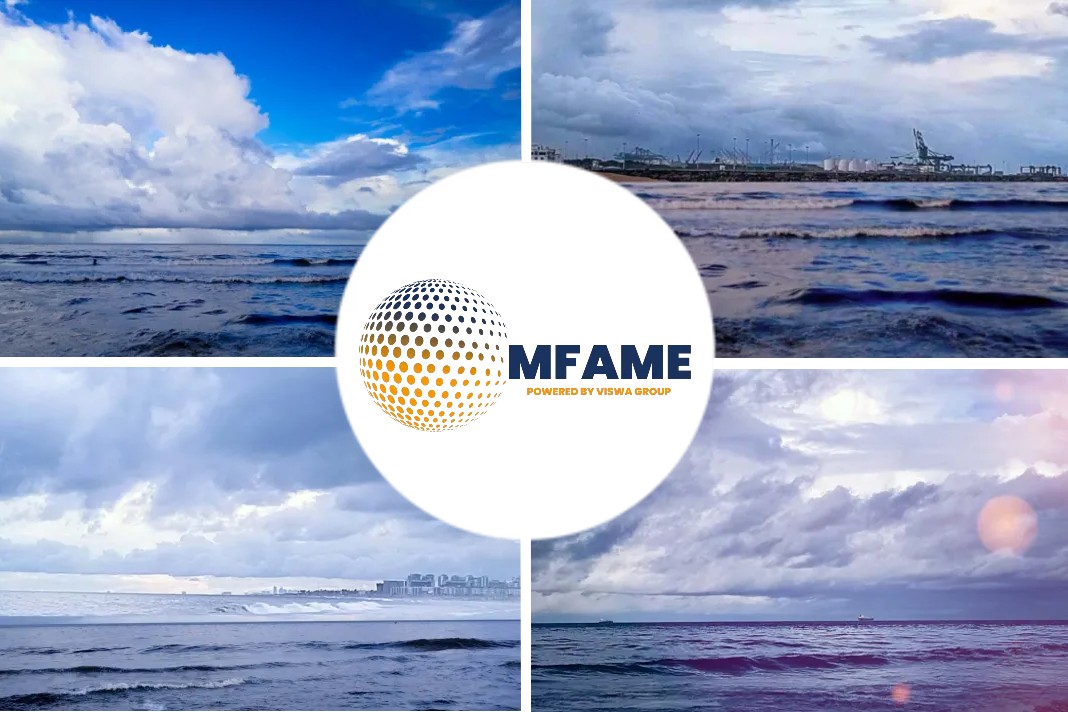 A rise in container-ship accidents adds to the growing marine plastic pollution problem and poses risks to ocean health, wildlife and mariners, says in article published on revelator website.
A rise in container-ship accidents adds to the growing marine plastic pollution problem and poses risks to ocean health, wildlife and mariners, says in article published on revelator website.
Recent accident
The coast of Sri Lanka that was carrying 25 tons of nitric acid and other cargo suffered an explosion after containers caught fire on May 20 and burned for more than a week, littering the beaches with plastic pollution.
Worst shipping accidents on record, which occurred near midnight on Nov. 30 as towering waves buffeted the ONE Apus, a 1,200-foot cargo ship delivering thousands of containers full of goods from China to Los Angeles. The container stack lashed to the ship’s deck collapsed, tossing more than 1,800 containers into the sea. Some of those containers carried dangerous goods, including batteries, fireworks and liquid ethanol.
More than 3,000 cargo containers into the Pacific Ocean along shipping routes between Asia and the United States. They include the loss of 100 containers from the ONE Aquila on Oct. 30 and 750 containers from the Maersk Essen on Jan. 16. Both ships encountered rough weather while delivering goods to the United States.
Decades of Debris
That dark place is the inside of a shipping container. Back in the 1990s Ebbesmeyer began applying his oceanography skills to tracking debris from what seemed like an ever-increasing number of container accidents. One year it was 28,000 rubber bath toys shaped like ducks, beavers, turtles and frogs that spilled from a single container lost in the North Pacific. Another year it was 61,000 Nike sneakers from a handful of containers, also in the Pacific.
But the accidents didn’t stop. In 1997 a single container lost from a ship in near England spilled 5 million Lego pieces, which still wash ashore today.
In the early 2000s, it was computer monitors landing on beaches from California to Alaska. Ebbesmeyer says the shippers seldom disclosed how many items were lost, and he suspects the same silence will surround the ONE Apus and other recent spills.
Who’s Minding the Ship?
On the open seas, the shipping trade is primarily governed by the International Maritime Organization and other United Nations groups. Among their primary tools is the Safety of Life at Sea (SOLAS) treaty, originally signed in 1914. It was last amended in 2016 with new rules on weighing of containers, intended to lessen spills.
In 2014 the IMO also endorsed an updated code of practice for cargo ships, which addresses packing, stacking and lashing of containers. Although shippers frequently blame losses on rough weather, as happened in each of last winter’s Pacific Ocean accidents, investigation often reveals underlying problems in lashing and other practices that occur before a ship even leaves port. That happened in May 2020 when the APL England lost 43 containers near Australia, forcing popular Sydney beaches to close as authorities cleaned a debris field of appliance parts, plastic boxes and face masks.
The updated code of practice is only voluntary and does not include provisions for tracking lost containers or revealing their contents. But continued cargo accidents may be forcing a change.
Effect on aquatic life
“They’re like time capsules of everything we buy and sell, sitting in the deep sea,” says Andrew DeVogelaere, NOAA research coordinator at the Monterey Bay National Marine Sanctuary in California. Those lost containers may harm wildlife and ocean health, he says, by crushing aquatic habitats or introducing new seabed features that change biological communities or even aid the spread of invasive species. They can also release hazardous cargo such as the 6,000 pounds of sulfuric acid that went into the sea when the Maersk Shanghai lost containers off of the North Carolina coast in 2018.
Many are likely on the ocean floor, but an unknown number may have ruptured and disgorged their contents, which typically include many thousands of consumer items made of plastic. They could float for years in the ocean or wash ashore in Alaska, Hawai‘i or other locations.
Summary
- A rise in container-ship accidents adds to the growing marine plastic pollution problem and poses risks to ocean health, wildlife and mariners.
- Lost container littering the beaches with plastic pollution.
- On the open seas, the shipping trade is primarily governed by the International Maritime Organization and other United Nations groups.
- That plastic never goes away, It drifts around in the water or flies overhead in the stomachs of seabirds. It haunts you over time.
Did you subscribe to our daily newsletter
It’s Free! Click here to subscribe!
Source: therevelator.org















